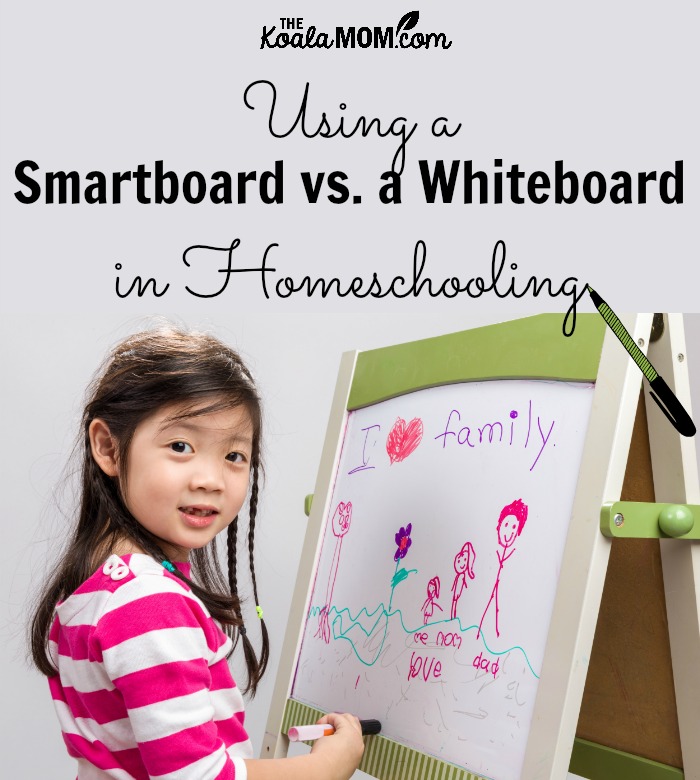Over the last few years, the whiteboard (and blackboard) has been overshadowed by the newest gadget in school, the smartboard. Many schools have invested in smartboards for their classrooms, and while they seem exciting and new, are they really as practical and useful as they seem? And can they benefit homeschoolers as well as kids in regular classrooms?

Smartboards were first created in 1991 when technology and everyday life started to intertwine. However, it wasn’t until recent years that they really took off. They are called “smartboards” simply because the company who created “interactive boards” specialized in smart technologies.
The smartboard’s sole purpose is to interactively have the computer screen projected onto the board so that the user can then write notes on the screen. This was once done the old fashioned way by simply using a projector and cable, but as time has gone on there was clearly a gap in the market, and the smartboard was born.
Having a smartboard is a great way of adding a modern twist to your classroom, even if you homeschool. The smartboard is a great way of being able to access certain websites or documents and presenting them on a larger screen. Having the ability to use special pens to write or select options on the board enables you to work efficiently and show the material in front of a class or student. Smartboards also allow you to save the notes created on the board, which is handy for homeschool reporting.
However, there are, as with any technological product, a few downfalls. The main downfall to smartboards are the very high chances that they will not preform to the standard you require. Smartboards have to be plugged into an electrical source, as well as connected to a projector. So in the event of a power cut or electrical fault, the board will be totally unusable.
The main pen used (which can also be a remote) must have batteries and you only get a set of four pens with the board. You can only write on the board with the allocated pens and the board must have a projection from the projector to work. If you by any chance loose one or more of the pens, they must be replaced, which is costly and time consuming.
Then we have the whiteboard, also known as “dry wipe board,” a product that dates back to the 1960s and still going strong. The whiteboard is something that has stretched out of its comfort zone and started to become desirable in homes and businesses everywhere. Coming in hundreds of different shapes, sizes and styles, it is very easy to find the right one to suit your needs.
Being so versatile, the whiteboard has slowly but surely overtaken the traditional chalkboard (which I grew up with when I was homeschooling) in most respects. While the chalkboard is still a popular item, the whiteboard is winning the race, with its glossy texture and ability to wipe clean. We use a small whiteboard on our fridge for writing notes about daily activities, and the girls have several “dry erase books” that let them use whiteboard markers to do activities and then wipe clean, just like using a white board.
When it comes to deciding between the smartboard and the whiteboard, it really is down to personal preference. Practicality is the main element in choosing which is most suitable. If you’re wanting modern, up-to-date technology that might be more engaging for older students, then the smartboard is the item to go for. If you’re more of a traditional character, wanting practicality and reliability, and have younger students, then the whiteboard is the one for you.
Do you use a chalkboard, whiteboard, or smartboard in your homeschool? Which do you find best for your students?

No Responses Yet